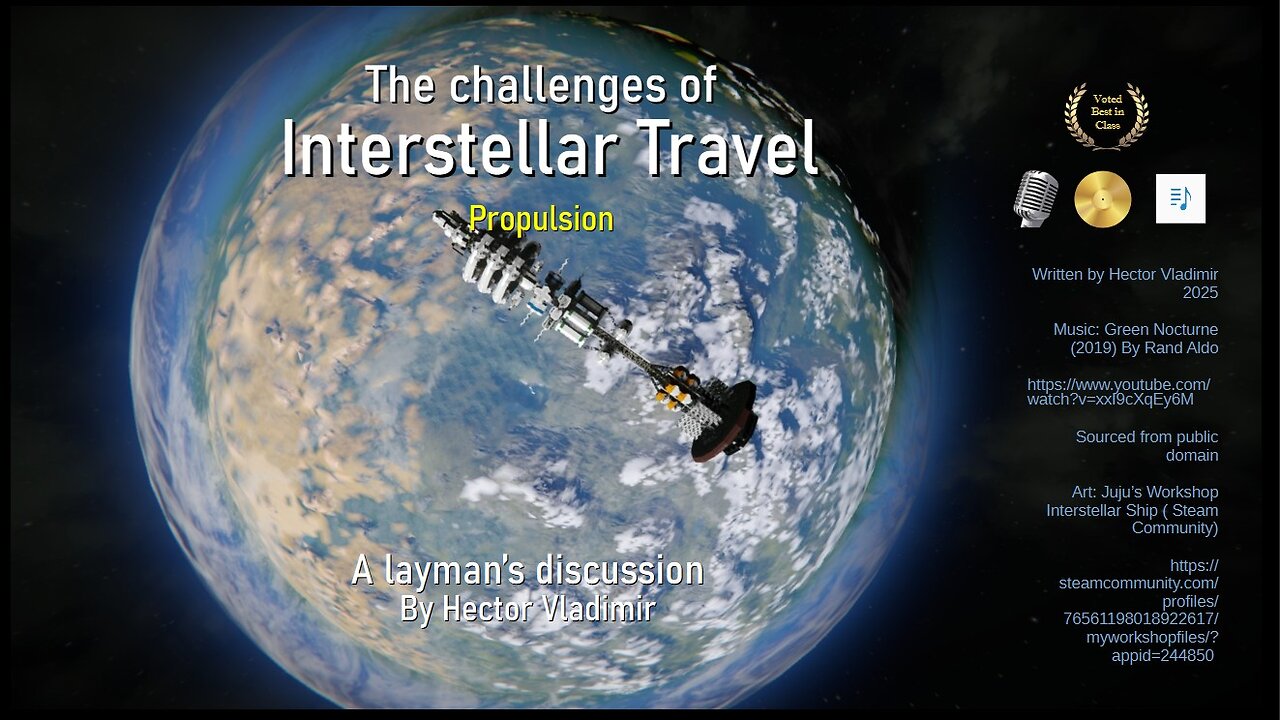Challenges with interstellar travel - propulsion
The current technology we have for interstellar space travel is very limited, with slow speeds and outdated rockets. Our fastest rocket, Saturn 5, could only reach speeds of about 25,000 km per hour, which means it would take 188,000 years to reach the closest star system, Alpha-Centauri. Nuclear propulsion, either through fusion or fission, is not yet feasible for interstellar flights. Fission reactors have slow escape velocities and pulsed nuclear thrusters have technical challenges to overcome, such as blast recoil and radiation exposure for the crew. Nuclear fusion, if fully developed, holds the most promise for solving these problems. However, currently, we have to make do with the limited technology we have and accept the odds that are stacked against us in interstellar travel.
The vacuum of space presents navigation and habitation challenges for interstellar missions. It takes a
Hector Vladimir 2025©
https://www.youtube.com/playlist?list=PLyWqApEqGtc5foyq8ccjATrgVnt3Gy9KD https://www.youtube.com/playlist?list=PLyWqApEqGtc6nd-_C6bkiKnMxLBg7DfgK http://www.youtube.com/@hbcsolarpvtech
https://www.youtube.com/@HBCSolarPVTechByron
Patreon: https://www.patreon.com/hectorvladimir
Substack: https://hectorvladimir.substack.com/
-
 1:06:40
1:06:40
Donald Trump Jr.
10 hours agoThe Left is Taking one L After Another, Live with Michael Knowles | Triggered Ep. 217
150K106 -
 47:17
47:17
Kimberly Guilfoyle
10 hours agoWoke Gets DOGE’d, Live with AJ Rice & Jarrett Stepman | Ep. 197
112K42 -
 20:11
20:11
Candace Show Podcast
8 hours agoBecoming Brigitte: Candace Owens x Xavier Poussard | Ep 6
168K312 -
 8:25:38
8:25:38
Dr Disrespect
13 hours ago🔴LIVE - DR DISRESPECT - ELDEN RING DLC - REVENGE
179K21 -
 54:22
54:22
LFA TV
1 day agoThe End of the Trans-Atlantic Alliance | TRUMPET DAILY 2.17.25 7PM
40.9K6 -
 55:56
55:56
BIG NEM
12 hours agoUGLY COCO: The Rapper Who’s Tried EVERY PSYCHEDELIC 🌌
15.5K1 -
 1:42:51
1:42:51
2 MIKES LIVE
9 hours ago2 MIKES LIVE #181 Deep Dive Monday!
21.6K3 -
 1:57:43
1:57:43
Quite Frankly
10 hours ago"Low Tide at The Pier: Munich Tears" 2/17/25
33.2K18 -
 27:44
27:44
The Based Mother
11 hours ago $0.61 earnedBOOK BAN LIES. Karen England and the MSM fairy tale that books are being “banned” by fascists
16.1K3 -
 1:01:52
1:01:52
In The Litter Box w/ Jewels & Catturd
1 day agoBest Presidents' Day Ever! | In the Litter Box w/ Jewels & Catturd – Ep. 743 – 2/17/2025
110K78
